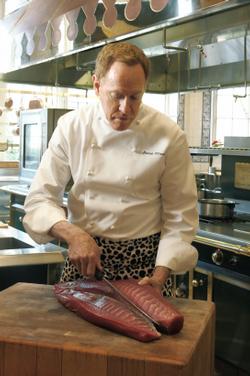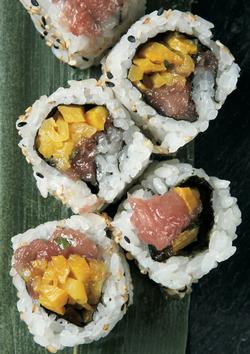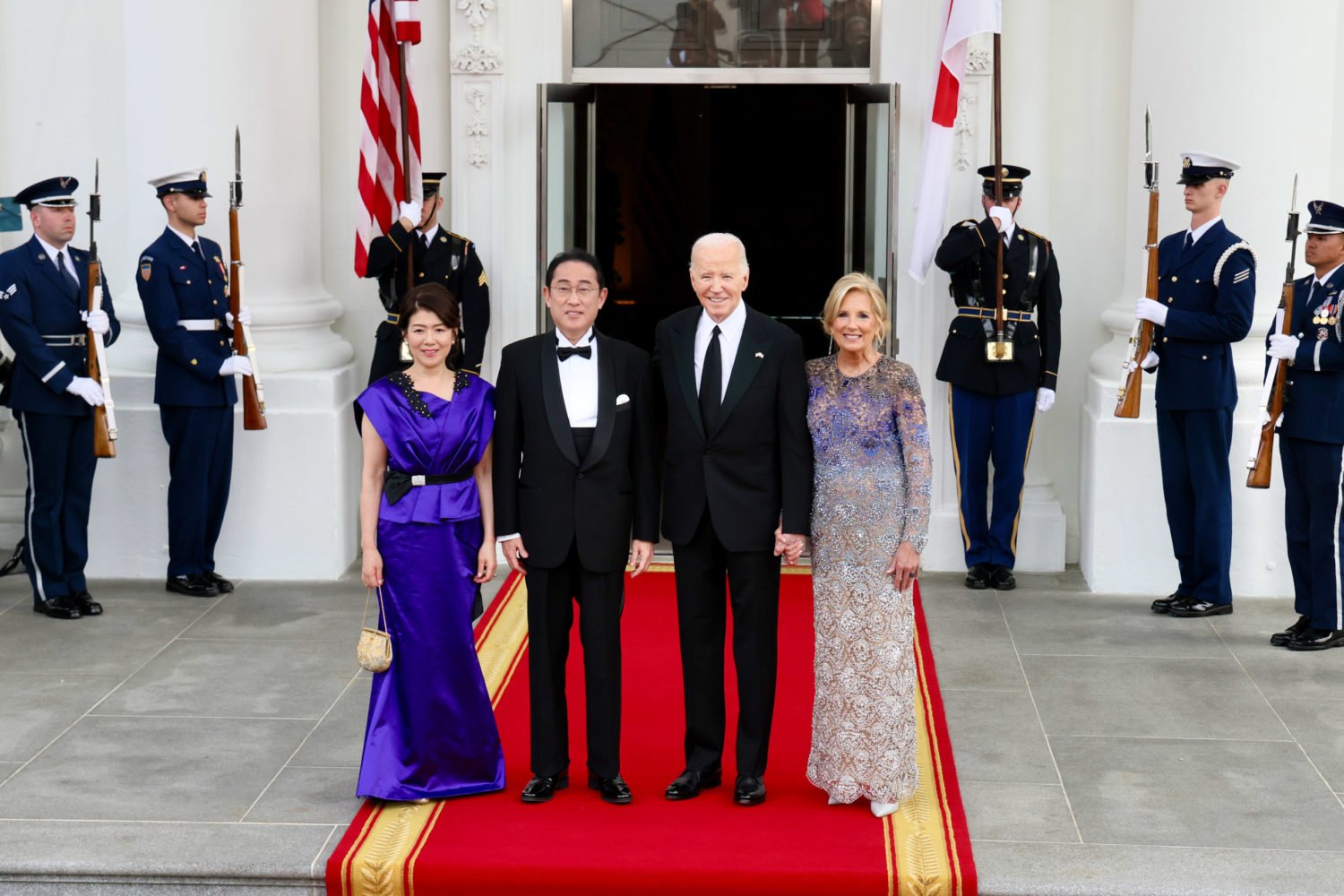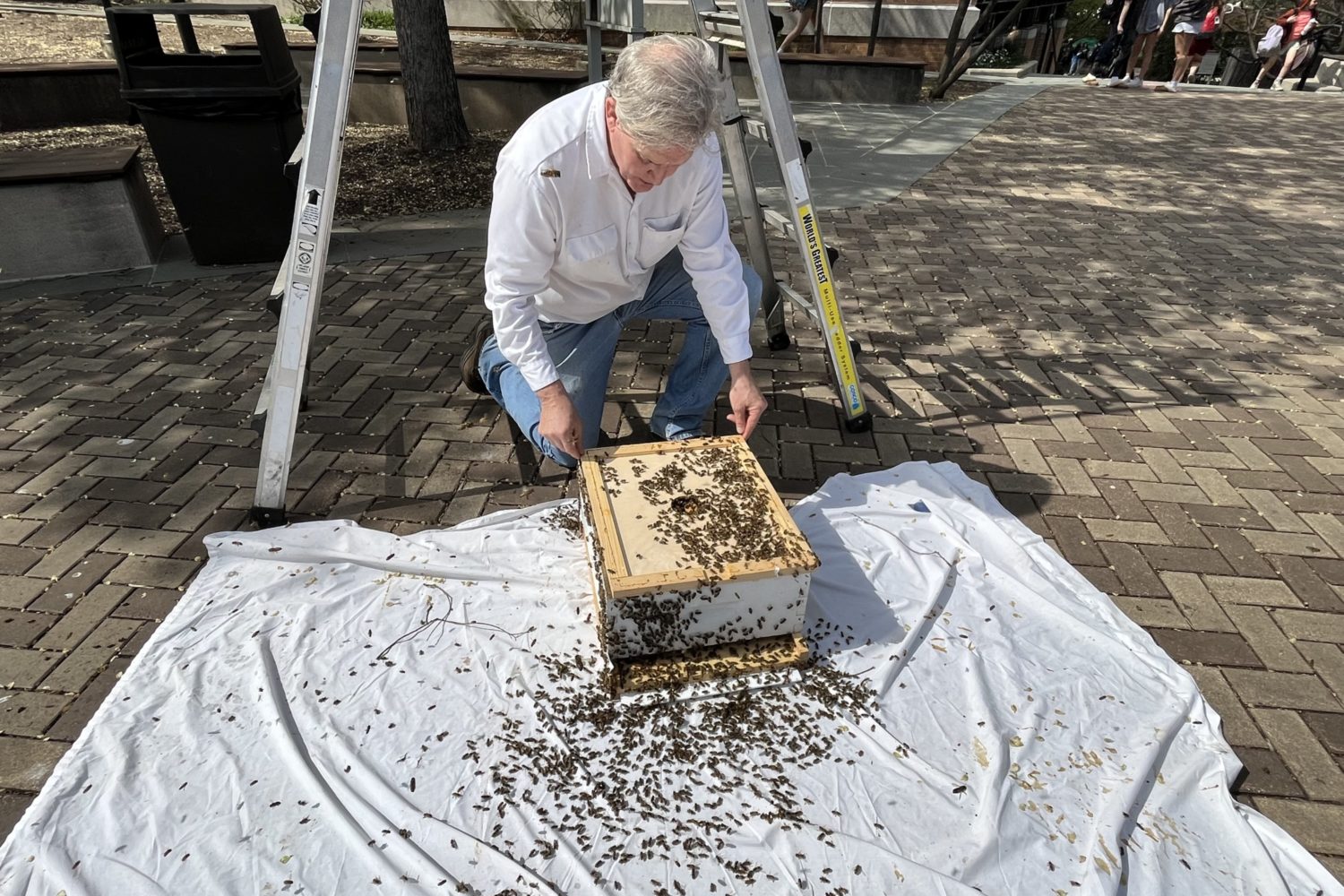
I remember the moment it began, the night that launched me on a yearlong quest to solve the mystery of what happened to tuna.
Two slabs of tuna sat on the plate, ruby red and shining with moisture. I was sitting with my wife at the bar in one of the city’s best sushi restaurants, and my mouth began watering in memory of what so many previous meals had told me was coming. The next bite would bring the sweet, saltwatery succulence I’d waited an entire meal for. We dug in with our chopsticks.
My wife would often close her eyes when eating tuna, the better to savor it. But now she turned to me in astonishment. This fish was an impostor. It looked the part, but it was mealy, soft, flavorless.
Maybe, I said to my wife, it was a bad piece of fish. I brought up this possibility with the chef, who gladly sliced us off a couple more pieces from a ruby-red loin. But these were no better.
We chalked it up to a bad night, although it was a little hard to accept that line of reasoning: Every other piece of fish we ate that night—yellowtail, mackerel, salmon—had been as wonderful as before.
A month later we returned. We ordered the same meal as before and got the same results. The usual sushi chef was not there, so I asked his assistant about the tuna. Were they going somewhere else for their fish? A different supplier, a different variety? “Nope,” he told me. “Same tuna we always get.” He seemed more perplexed than I did.
Was it possible they were doing something different in the kitchen? “We do,” he said, “what we always do.”
As I made my rounds about town as a restaurant critic and traveled to other cities to keep abreast of trends, I decided to see whether I’d had a bad run of tuna or whether tuna itself was having a bad run. I ordered tuna everywhere I saw it. In all, I consumed some seven dozen different preparations. I was struck, first of all, by the consistency of what I ate. It did not matter whether I was in Northern Virginia, Maryland, or DC—or in New York, Philadelphia, or Charleston. It did not matter whether it was served raw—in any number of iterations of sushi or sashimi or carpaccio or tartare—or seared in a pan and offered up as a fishlike version of steak. The tuna was as mealy and soft and tasteless as what I’d eaten at the sushi bar in DC.
Only two tuna dishes I ate all year reminded me of what I used to crave. One was an appetizer, called Fire and Ice, at the Inn at Little Washington, a Band-Aid-size portion paired with a cucumber sorbet. It costs $138 or $168—the prices of the inn’s prix fixe four-course menu—to get it. The other was at Bar Masa in New York, the “cheaper” alternative to Masa, where dinner goes for $600 a person. The fish was good. Very good. It also cost a small fortune.
Most preparations of tuna I tried didn’t even approach “good.” At some point during one of these tuna-eating excursions, my wife turned and said, “I know you’re obligated to keep ordering it. But you know? I don’t care if I never eat it again.”
What happened to tuna?
A generation ago, most Washingtonians thought tuna was something that came out of a can. Tuna was tuna fish—firm, taupe-colored flakes that were blended with jarred mayo to make a nice spread for sandwiches.
Then sushi arrived, and suddenly the notion of tuna not from a can—of tuna you paid good money for—was not so far-fetched. Tuna, with salmon and yellowtail, formed the holy trinity for sushi eaters. We judged a place by the quality of those three fishes—how succulent, how firm, how cool. Toro, or fatty tuna, the belly of the fish, became an obsession, the single piece sushi eaters lived for. I had come to believe that a great piece of toro was akin to a great steak and in some ways superior to it. When it was good, toro virtually melted on the tongue.
Chefs who were not sushi chefs discovered that tuna, because it was firm and meaty, could be turned into a substitute for steak. With some customers spooked by mad-cow disease and fearful of a high-beef diet, seared tuna became a piscatorial savior for many chefs. It was the new swordfish, only more popular than swordfish ever had been. By 2000, even chains such as Friday’s and Applebee’s were featuring seared tuna.
Once a luxury, tuna had been democratized to the point of ubiquity. Somewhere along the way, it became something else: a food that is only good when prepared at the highest level.
Who is to blame? According to the more than 30 chefs I talked with, there is no shortage of culprits.
The explosion of sushi in the West has resulted in overfishing in the Mediterranean and the Atlantic, which has depleted the supply of bluefin tuna, the backbone of the sushi industry. Many chefs believe that the bluefin, with its high fat content and rich, marbled flesh, is the world’s best tuna; the bidding wars that break out in the auction houses of Japan for these hulking specimens bear this out. These days, the bluefin is approaching extinction.
According to the World Wildlife Fund, bluefin catches have dwindled to less than a sixth of what they were ten years ago. Sergi Tudela, the head of fisheries at the fund’s Mediterranean program, has issued a warning: “We are near collapse of the bluefin tuna species in the Mediterranean and the east Atlantic.”
Equally uncertain is the fate of the bigeye tuna, which is found in and around the Pacific and is nearly as good as bluefin. (The leaner yellowfin tuna is much less prized; it often turns up on many midlevel and chain-restaurant menus under its marketing name, ahi.)
It’s not just demand outstripping supply. If this is the age of the global-minded chef, when buying ingredients from around the world is as simple as clicking and pointing, it’s also the age of the global-minded fisherman. A number of chefs in Washington depend on independent buyers to deliver them fresh, line-caught fish, whether from the cold waters of New England or the warmer waters of the Mid-Atlantic and the Gulf. In recent years, fishermen have gotten wise and begun overnighting their catches to Japan for double and triple the prices they can get domestically.
Russell Gravatt, one of the owners of Sushi-Ko, has watched the tuna market explode since he and his partner, Daisu Utagawa, opened DC’s first sushi restaurant in 1976. “It used to be pretty straightforward,” says Gravatt. “You could get what you wanted, no problem. Now all those big mondo fish are going to Japan. I got a guy in Chatham, Massachusetts. FedEx has changed his life. He sends to Japan all the time. He can get twice what he can here.”
According to the National Marine Fisheries Service, only 5 percent of all bluefin tuna caught in the North Atlantic ends up in the hands of American chefs; the rest finds its way to the auction block in Japan.
Japanese buyers will pay as much as $100,000 for a good-size, fatty bluefin tuna. “It shouldn’t come as any surprise why most of it winds up in Japan,” says Bob Kinkead, executive chef and owner of Kinkead’s, the popular downtown DC seafood emporium. “The difference now is that they have their fishing boats all over the world.”
The Japanese boats are helped by strict US quotas that curtail the ability of American fishermen to compete. American commercial waters stretch 200 miles into the Atlantic. But beyond that, waters are open to international competitors who do not have to abide by the same regulations as American fishermen.
Robert Wiedmaier, the chef and proprietor of Marcel’s in downtown DC, says the relationship between the Japanese and tuna is about more than economics: “You’re talking about a culture that understands and recognizes tuna for what it is. In America, you have the steak. In Japan, you have tuna. The Japanese will pay top dollar for good tuna.”
The result is that it’s becoming harder and harder for American chefs to get the good stuff.
Yet the public’s appetite for tuna—despite the mealiness of so much of the fish out there and increasing reports of high levels of mercury that have been tainting tuna and making news since last summer—shows no signs of flagging. Which means more and more of the not-so-good stuff finds its way into the marketplace. It also means that more and more dubious practices are becoming commonplace.

“I can’t even fathom how tuna still exists,” says Wiedmaier. “The fish industry is probably the most corrupt industry in the food chain, because there are no controls.”
As the tuna industry has become as global as the diamond trade—and as frenzied and competitive—illegal fishing is rampant, and freezing fish at the docks has become common.
Cheaper sushi bars often use what is called saku, or wood-gassed tuna, suspending the fish in a cloud of below-freezing air to fix its color and stall its deterioration. Saku is also what shows up in the sushi assortments in the refrigerated cases of some grocery stores. “You’ll know it if you see it,” says Gravatt. “It’s beautiful to look at. It doesn’t taste like anything, but it’s as red as a bottle of ketchup.” Because this tuna is cold-smoked, freezing doesn’t affect its texture too much. And if texture is not everything with tuna, it is most things.
Tuna and salmon are easier to freeze than other fish. That and tuna’s popularity account for the ubiquity of subthermal freezers. The function of these freezers is to extend the shelf life of a fresh-caught tuna—preserving its texture and color—so it can stay out of the water longer without suffering the effects of exposure. Because of subthermal freezers, a piece of fish can arrive at a restaurant in Washington weeks after it was caught and still be put to use.
“You take it out, put it in 98.6-degree water for a few minutes with a couple of tablespoons of salt, and it’s pretty good,” says Gravatt.
Will it taste as fresh as when it was just taken from the deep? No. But neither will it be spoiled.
Kaz Okochi, of DC’s Kaz Sushi Bistro, told me that among the varieties of tuna he buys is one that is caught off the western coast of Florida. It takes an average of three days from the time the fish is caught to reach his supplier and another day to reach his restaurant. Without subthermal freezing, the fish would have spoiled before it arrived in DC.
If four days sounds like too long out of water for a piece of raw fish—the antithesis of the credo of freshness that many sushi restaurants trade on—consider this: Kaz Sushi Bistro is among the most reputable sushi restaurants in the area. Okochi considers himself a purist.
Yu Sheon, manager of Café Asia, with locations in Arlington and DC, says that a skilled chef can do much to prolong the shelf life of fish: changing its wrapper frequently (“several times a day, at least”), maintaining a strict temperature, continually washing his hands. “If you can really preserve it well and nicely,” Sheon says, “you can keep a piece of fish around for a while.”
James Tan, the manager of Dupont Circle’s Uni, notes that once a fish has thawed, it can be kept around “a maximum of three days.” Which means that even at a popular, well-regarded restaurant you might be eating a piece of tuna that was caught a week earlier and kept frozen until dinner.
The nation’s poorly developed distribution system is partly to blame—in Japan, a four-day wait is unheard of. But also to blame are new technologies that have arisen to mask the problem.
Besides freezing to prolong the shelf life, there is the growing practice of injecting fish with red dye to make it more eye-catching. Some stores, such as Whole Foods, have taken it upon themselves to alert consumers to this practice. But I’ve never seen any such notice on a restaurant menu.
Some diners are victims of their own expanded knowledge. Early in our sushi educations, we were taught to prize tuna that was a deep, dark red—the redder the better. According to Sheon, this is a misconception: “Brilliant red does not necessarily mean fresher.” Sometimes sushi chefs can tell a doctored piece, he says, and sometimes they can’t. And if a chef can’t tell the difference between the two, woe be to the diner.
All the chefs I talked to deplored the state of tuna today. Yet all were quick to tell me that they have been able to procure the good stuff for their restaurants.
Their dishes betray them: Many have contrived ways to get around the tuna problem. At less-premium sushi bars, paper-thin lemon slices are appearing on platters of sashimi as colorful dividers separating the varieties of fish. But they’re there for more than mere aesthetics. A hit of citrus can perk up a slice of otherwise ordinary tuna.
Good sushi bars are not beyond employing some tricks. At Joss in Annapolis, the kitchen has been featuring “a trio of toros,” a dish that allows the restaurant to fly the flag of innovation while obscuring the fact that its tuna isn’t superlative. In each iteration, the tuna is duded up with other ingredients—capped with a mashed paste of mountain yam, spiked with sesame and chili oils, grilled and anointed with a dab of grated radish and spicy ponzu sauce. As Joss shows, masking, if done right, can taste good.
Non-sushi chefs are slicing their tuna into a waferlike thinness for carpaccio or chopping it up into cubes and mixing it with oils and spices for tartare—anything but serving it as a whole, thick steak, where the quality of the fish would come under scrutiny.
At Mendocino Grille, chef Barry Koslow has been serving a dish called “tuna carpaccio.” Shorn into sheer bands, then spritzed with the juice of yuzu, a tart Asian fruit, the tuna is served in a thick, mossy tangle of seaweed. The dish is less about the fish than about the seaweed, the tuna intended mostly to provide a textural counterpoint—not to mention the cachet of its name. But it would be hard to imagine the fish any more stripped of its once-kingly status than this—first cut thin, then bathed in citrus, and finally mixed with another, stronger-tasting ingredient.
Morou Ouattara, the chef at Farrah Olivia, goes to similar extremes for something he calls “shocked tuna.” The shock refers to the blanching technique of dipping an uncooked loin into boiling water, then submerging it in a bucket of chilled soy sauce and red wine. Shocking changes the texture of the fish, masking the mealiness that characterizes so much tuna these days. Meanwhile, the soy sauce accentuates the meatiness of the fish. Ouattara plays up this fact, embroidering the plate with a tiny mound of powder made from dehydrated Burgundy.
“Shock” is the appropriate word for what Ouattara has done because only such a bizarre tactic could turn a fish that is often tasteless into something tasty.
Much as I admired the ingenuity of those coping strategies, it only reinforced for me how far tuna had slipped, from something that chefs once promised to get out of the way of to something that needed to be managed.
The more tuna I ate in Washington and beyond, the more I kept coming back to the tuna at the Inn at Little Washington. Why was the tuna at the inn so much better than the tuna I ate everywhere else?
I had thought the difference in taste had mostly to do with price. Mostly it does. But that doesn’t begin to explain the complex set of decisions that occurs before either of chef Patrick O’Connell’s two tuna preparations—the aforementioned Fire and Ice and Tuna Pretending to Be Filet Mignon, in which a thick slab of seared foie gras is set atop an even thicker slab of seared tuna—comes within sight of the inn’s hand-painted, 24-karat-gold dishes.
It starts with O’Connell’s personal buyer, the man responsible for getting him the best tuna possible. The buyer, whose name the chef won’t disclose, also procures tuna for Charlie Trotter’s, Le Bernardin, and Per Se—three of the country’s best restaurants.
The buyer works only in Hawaii, where O’Connell believes the best tuna—bigeye tuna—comes from. Even so, the chef claims, only “one out of 300” tunas this buyer finds for him is good enough to make the 5,000-mile journey to Virginia.
O’Connell buys only one tuna at a time. And he purchases only one grade: 1++. “If I can’t get 1++,” he told me, “I don’t put it on the menu that night. I think most restaurants don’t even know that grade exists.”
Grading is done at the docks, where the tuna is evaluated for color and fat content. This last analysis is accomplished by sticking a sashimo, a long, needlelike probe, into a sample steak cut from the tail. The greasier the probe, the higher the grade. Not content to rely entirely on an official grade, O’Connell has his buyer squeeze the tuna to check its oil content.
Grading has nothing to do with the freshness of a fish, although you might never know it to read a restaurant menu or buy tuna at a high-end supermarket. Diners and buyers alike are wooed with the prospect of “sushi-grade” fish.
O’Connell says he was like a lot of us in believing that that label was a guarantee of quality: “I used to think, 15 years ago or so, that it meant impeccably fresh.”
He’s learned better.
“You can have a fish that’s just been pulled from the water that’s a 3,” says O’Connell. The way he says it, he makes Grade 3 tuna sound like something you’d find at a truck-stop diner.
After O’Connell’s choice, Grade 1++, comes Grade 1+, followed by Grade 1, Grade 2+, Grade 2, and Grade 3. That’s three levels of separation between the inn and most good restaurants. And five levels of separation between the inn and most cheap sushi bars.
The process by which the tuna is transferred from the buyer’s hands to O’Connell’s custom-designed kitchen unspools with the precision of a spy operation. O’Connell’s order is in by 8 am Hawaii time. It arrives at the inn by UPS between 10:30 pm and 1:30 am. The fish is delivered to the kitchen in a permeable airbag filled with ice, with a quarter of the fish exposed to the air. This lets O’Connell get a look at the fish in a natural state. A plug, or sample, of the tuna is cut from the tail and laid atop the fish so O’Connell and his staff can sample the flesh and make a quick call as to whether they want to keep it. They eat the plug while the deliveryman waits, his car idling.
O’Connell assesses each piece according to five criteria: firmness, texture, clarity, color, and oil. This last is critical to achieving what food critics and gastronomes call “mouthfeel”—the quality of luxuriousness in the mouth.
O’Connell says he pays anywhere from $16.95 to $25 a pound for his tuna, but he appreciates the fact that most restaurants can’t play that game and suggests that he wouldn’t pay it either if he weren’t working at the level of the famed inn.
“It’s like antiques,” he says. “There’s just not enough of the good stuff . . . to go around. And who wants to pay upward of $20 per pound? And if the public doesn’t know the difference, then is it money well spent?”
I put the question to Wiedmaier. Marcel’s is among the city’s most expensive restaurants. Its tasting menu—at $98 per person—is about half of the price of the inn’s. Wiedmaier is committed to finding the freshest, most exquisite ingredients he can find, but when it comes to tuna, he told me, he draws a line.
Wiedmaier says he is currently serving Grade 1 tuna. Why doesn’t he make the leap up to Grade 1++?
“Because then I’d have to charge about $46 for tuna. The Japanese, they’ll pay that kind of money because they love fish and they understand it. But not here. No way. I’d be hanging from Pennsylvania Avenue if I put that on my menu.”
Some chefs, faced with the prospect of pricing themselves out of the market or doctoring the tuna, have bailed out. Johnny Monis is one. The chef and proprietor of Komi, a Greek-accented restaurant a few blocks from Dupont Circle, Monis no longer serves tuna. You might think it would be a natural for his menu, as it’s such a common sight in and around the Mediterranean, the region Monis’s parents are from and from which he draws his inspiration.
Years ago he served a carpaccio of tuna with olive oil and shaved fennel, but it long ago left the repertory. “People don’t want to sit down to a $17 first course,” he says.
Five or six years ago, he says, he was able to get good-quality fish at a price that a small cafe could afford to splurge on. No more: “I can’t find tuna that’s worth the price I was paying for it.”
And Monis isn’t talking about Grade 1++ or even 1+. He’s talking about Grade 1, two levels below what Patrick O’Connell brings in six nights a week at the inn.
For a while, Monis devised a clever solution to the tuna problem. Early on he realized that running an ambitious restaurant on a limited budget would require him to cut back on the size of his portions; to compensate, he ratcheted up the richness of each dish. Out of the same necessity he began serving what he called “white tuna.”
In fact, it wasn’t tuna—it was a loin of Hawaiian waloo. What it had that a lot of red tuna does not is “a good amount of fat.” It also had a “lot more flavor.”
One of the quirks of waloo is that it absorbs whatever it’s cooked with, says Monis, so the chef wrapped it in speck, a cured and cold-smoked bacon from Italy. The speck amplified the richness of the fish and provided a kind of skin for the loin, which kept the flesh moist during roasting. Monis no longer serves the speck-wrapped white tuna, but not for lack of popularity: The dish flew out of the kitchen.
So why call it tuna if it’s not tuna?
“Because people already know what tuna is. They have an expectation. And the waloo approximates that same taste and oiliness.”
Monis hasn’t been alone in looking for tuna replacements, and waloo isn’t the only one. Escolar, a tropical fish, has also been rechristened “white tuna” and has been popping up at restaurants and sushi bars.
Bob Kinkead argues that the practice is nothing new, that white tuna belongs to a long tradition of tinkering with names when it comes to fish. “Nobody wanted to eat Patagonian toothfish,” he says. “You call it Chilean sea bass, and suddenly everybody’s eating it.”
The comparison is especially apt, says Kinkead, when it comes to escolar. “You can cook that thing to death, and it’ll still be juicy, just like the Chilean sea bass.” He says this with the disdain of a kitchen veteran for whom fetching a pan of fish out of the oven at precisely the right moment separates the real cooks from the wannabes. He also refers to escolar as a “bottom feeder.”
So-called white tuna—whether waloo or escolar—has become a draw at many sushi restaurants, largely on the strength of the very quality that Kinkead sneers at. It’s almost never dry, its sheen of surface oil making it a close textural cousin to red tuna at its best. It’s a top seller at Kotobuki in DC’s Palisades, at Joss in Annapolis, and at Matuba in Bethesda.
At Sushi-Ko, the cooks sear the escolar and serve it with onion, ponzu, a garlic chip, and a garlic sauce or stuff it into a roll with jalapeño and mint.
“Americans like it,” says Gravatt. “It doesn’t really taste like fish, and the texture’s good. It’s about what you do with it more than any flavor it has on its own.”
Some chefs are even less kind in talking about it. One night I watched the chef at Sushi Kappo Kawasaki deliver an assortment of sashimi to the table. Several white fishes were included, and I asked whether one of them was white tuna. His grave face softened. He seemed to be laughing. In Japan, he explained, white tuna is considered cat food.
I haven’t given up on tuna, even if I have given up my yearlong quest. Let’s just say I’m a wiser, more questioning consumer.
One question in particular kept nagging at me as I brought my research to a close: Many chefs are no longer working with tuna. Was it safe to assume they were no longer eating it?
Most dodged the question, which was an answer in itself. But Monis was candid when asked if he would order tuna in a restaurant. He paused, then said: “I wouldn’t order a tartare, and I wouldn’t order a tuna steak, unless it’s of the highest quality and the person preparing it is really conscientious.”
I told him he was making tuna sound like fugu, the poisonous Japanese blowfish that requires special training on the part of the sushi chef to handle.
He realized the severity of his tone and backed off. Tuna, he said, isn’t dangerous, just costly, and often not worth the investment. “If I were in a restaurant I didn’t know well, I would want to know where it’s from, when the fish was caught, and how long it was out of the water.”
Good luck, I said.
“You asked,” he replied.

















